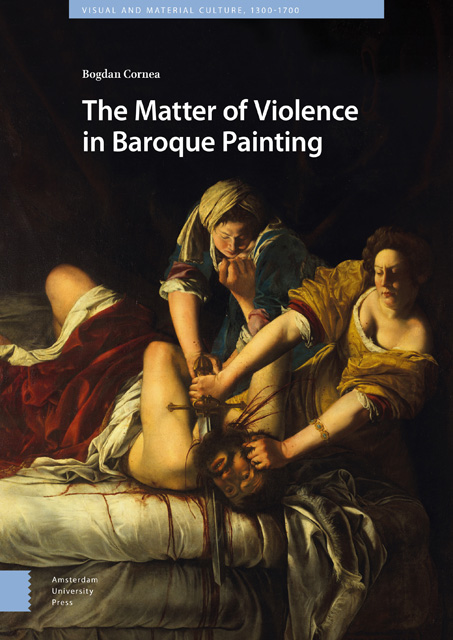Book contents
- Frontmatter
- Table of Contents
- Acknowledgments
- List of Images
- An Introduction
- 1 Wound: On Caravaggio’s Martyrdom of Saint Ursula
- 2 Touch: On Giovanni Lanfranco’s Saint Peter Healing Saint Agatha
- 3 Skin: On Jusepe de Ribera’s Martyrdom of Saint Bartholomew
- 4 Flesh: On Georges de La Tour’s Penitent Saint Jerome
- 5 Blood: On Artemisia Gentileschi’s Judith Slaying Holofernes
- 6 Death: On Francisco de Zurbarán’s The Martyrdom of Saint Serapion
- Conclusion
- General Bibliography
- Index
4 - Flesh: On Georges de La Tour’s Penitent Saint Jerome
Published online by Cambridge University Press: 18 April 2023
- Frontmatter
- Table of Contents
- Acknowledgments
- List of Images
- An Introduction
- 1 Wound: On Caravaggio’s Martyrdom of Saint Ursula
- 2 Touch: On Giovanni Lanfranco’s Saint Peter Healing Saint Agatha
- 3 Skin: On Jusepe de Ribera’s Martyrdom of Saint Bartholomew
- 4 Flesh: On Georges de La Tour’s Penitent Saint Jerome
- 5 Blood: On Artemisia Gentileschi’s Judith Slaying Holofernes
- 6 Death: On Francisco de Zurbarán’s The Martyrdom of Saint Serapion
- Conclusion
- General Bibliography
- Index
Summary
Abstract
Chapter Four explores the relationship between paint and flesh in the creation of violence in Georges de La Tour’s Penitent Saint Jerome. Building on the previous chapter’s research on the potentiality of paint to become either skin or flesh, this chapter focuses on how materiality becomes open flesh. By drawing comparisons with the works of other artists, La Tour is shown to have used the impasto technique to displace the violence of flagellation; this act of displacement is twofold: for the wounds on Jerome’s back are made visually present through the open surfaces rendering his face and hands, surfaces which confront the beholder with an open body. This violence that unfolds on the surface of the canvas is unexpectedly thrown at the beholder through an unexpected gaze that stares back at us from the corner of the canvas.
Keywords: Georges de La Tour, flesh, paint, wounds, flagellation
La Tour’s paintings are images that are enigmas.
– Pascal QuignardIt opens from a dark corner: halfway along the ground – an old man, fallen in deep penitence. A naked body, slightly covered by the cardinal’s red cloak, worn and torn at the edges, reveals its pitiful state. The skin hangs low with battered elegance around the swollen abdomen, the light grey curls frame the thick wrinkles on his face; the flesh, aged by the imputed sin of our forefathers, shiver under the rhythmic strokes of the rope. The fluidity of paint, rendered with unsurpassed elegance and speed, brings forth the fleshiness of the wretched body, making it gleam in the warm radiance of the candlelight. We slowly find ourselves lost in the materiality of these traces: moving from one brushstroke to another, from one layer to another, pausing ever so slightly on their broken edges, finding ourselves moved by an intense desire to touch and engage with the surface of paint as open fragments of rough flesh.
Georges de La Tour’s Penitent Saint Jerome (1630-1635) (Image 12) is a painting of displaced violence. The canvas reveals as much at it conceals: it shows the instrument of violence without showing the wound; it shows blood, although there is no visible lesion on the body; and it shows the potentiality of the paint to become open flesh in an image where the very denial of flesh is at stake – flagellation as the mortification of the flesh.
- Type
- Chapter
- Information
- The Matter of Violence in Baroque Painting , pp. 97 - 118Publisher: Amsterdam University PressPrint publication year: 2023



